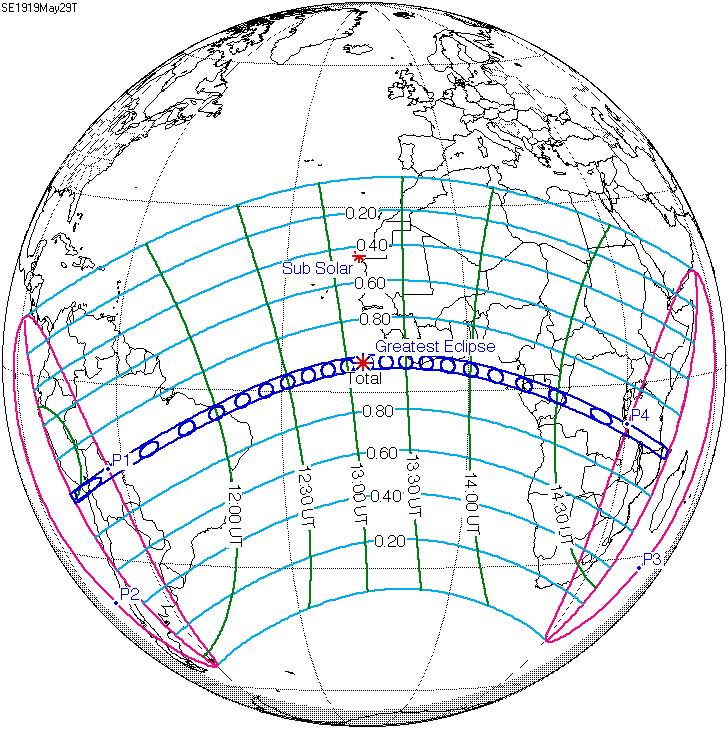Mastering Eddington’s Confirmation of General Relativity
Many people who witnessed the great eclipse of 2017 will remember it as a wondrous spectacle. But one amateur astronomer saw the event as an opportunity to reproduce measurements of the celebrated general theory of relativity, which provides the basis for understanding cosmological models of our expanding universe.
In 1915, Albert Einstein first presented his new model for describing gravity to the Prussian Academy of Sciences. Motivated by the notion that the laws of physics should not depend on location in or motion through the universe, Einstein had developed what we now call the general theory of relativity (GR). When first published, GR did not make much of a splash. Even after three or four years, Einstein lived in relative obscurity until a key measurement in 1919 brought him scientific fame.

A solar eclipse that traversed the Atlantic Ocean from South America to Africa propelled Einstein’s theory to prominence. According to GR, the gravitational well of the Sun should deflect light from distant stars by a predictable amount—an amount twice as large as predicted by Newtonian gravity. Like any solar eclipse, weather can unravel the best-laid plans. So astronomer Sir Arthur Eddington planned for two groups to make the critical measurements. Eddington and astronomer Sir Frank Watson Dyson traveled to Sobral, Brazil, while sending fellow astronomers Andrew Claude de la Cherois Crommelin and Charles Davidson to Príncipe Island off the west coast of Africa. Both groups found clear enough skies to observe stars during the eclipse. Eddington used the observations from Príncipe Island to compare star locations during the eclipse and six months earlier (when the same stars are in the sky at night). Eddington published a paper in 1920 declaring that “results of the observations here described appear to point quite definitely to . . . and confirm Einstein’s generalised relativity theory.”1
This first test of GR brought international recognition to Einstein and started a long chain of experiments that establish GR as arguably the most accurate description of the universe known. However, some people have questioned whether Eddington’s result actually supported GR or whether he may have shown some bias.2 History shows that GR is correct and that subsequent reanalysis of Eddington’s data validates his conclusions. Yet, scientists continually seek to improve upon results.
Donald Bruns, an amateur astronomer from San Diego, used a $4,000 telescope and a $5,000 camera to execute a plan he had perfected over two years. He took his setup to Casper, Wyoming, to photograph the 2017 eclipse and measure the deflection of stars as originally done by Eddington. Analyzing the data from his observations, he measured a deflection coefficient of 1.7512 arcsec.3 This value agrees with the predictions of GR within 3%, a marked improvement over previous optical attempts that had only achieved 10% accuracy. According to Physics Today, Brun’s work is “the most accurate and precise ground-based optical version of the Eddington experiment.”
Although Bruns’s research doesn’t fall into the class of “breakthrough,” it does represent scientists’ ongoing pursuit to understand the intimate and minute detailed workings of the cosmos. It also shows that relatively inexpensive projects can contribute significant results. But most importantly, it highlights the incredible curiosity and creativeness that drives humans—bearers of God’s image—to know the truth!
Endnotes
- Daniel Kennefick, “Testing Relativity from the 1919 Eclipse—A Question of Bias,” Physics Today 62 (March 1, 2009): 37–42, doi:10.1063/1.3099578.
- Donald G. Bruns, “Gravitational Starlight Deflection Measurements During the 21 August 2017 Total Solar Eclipse,” Classical and Quantum Gravity 35 (April 12, 2018): 075009, doi:10.1088/1361-6382/aaaf2a.






